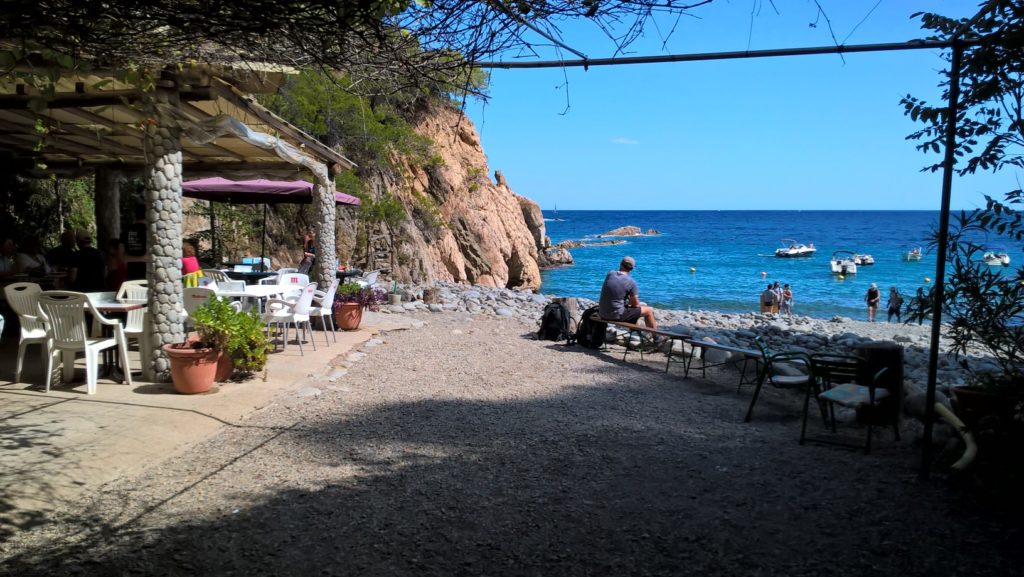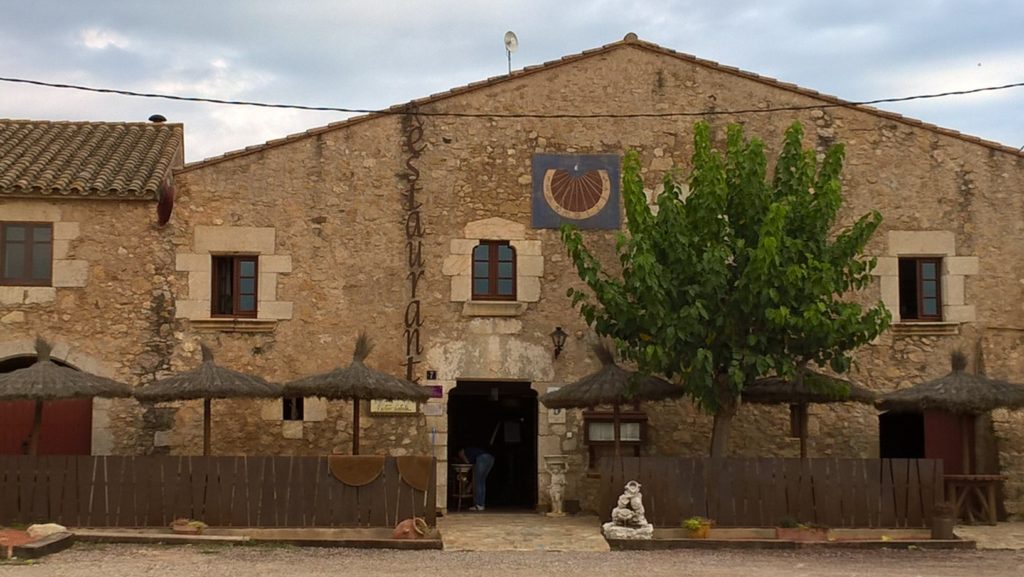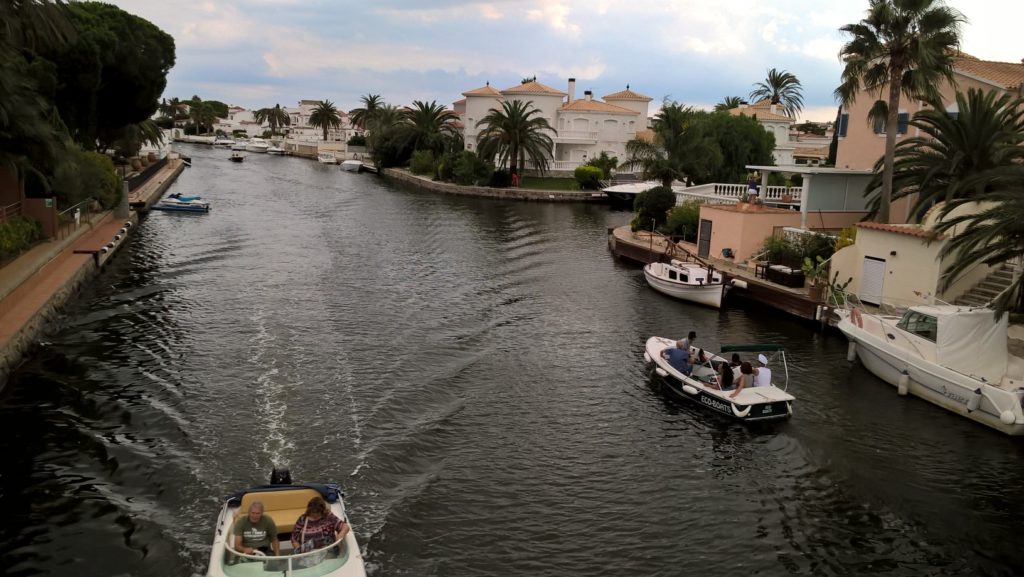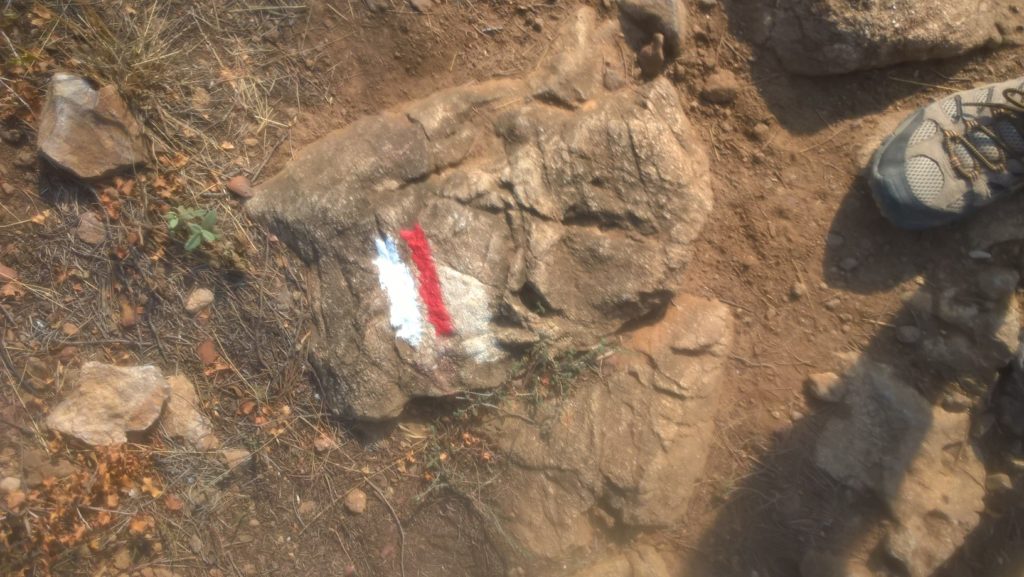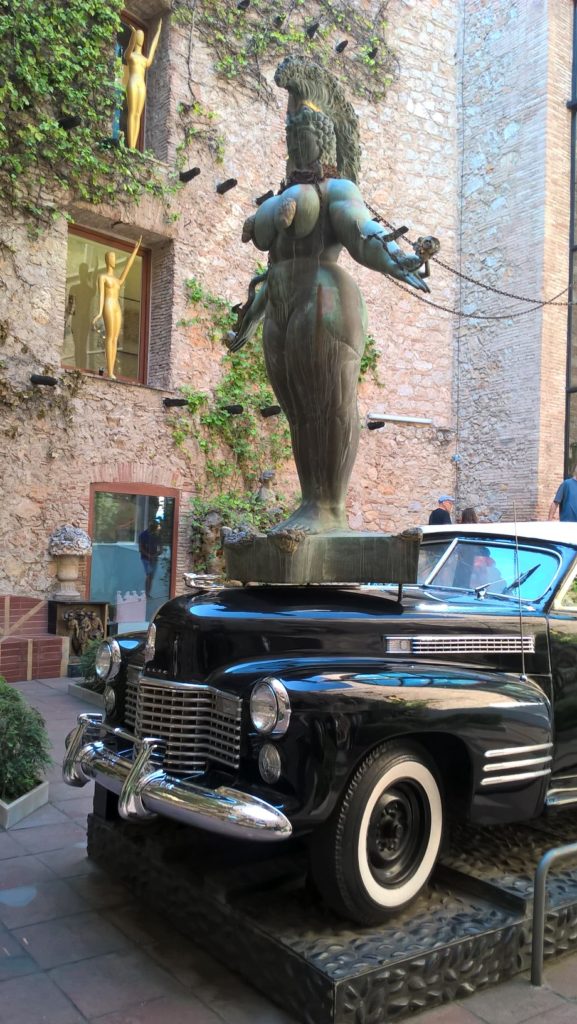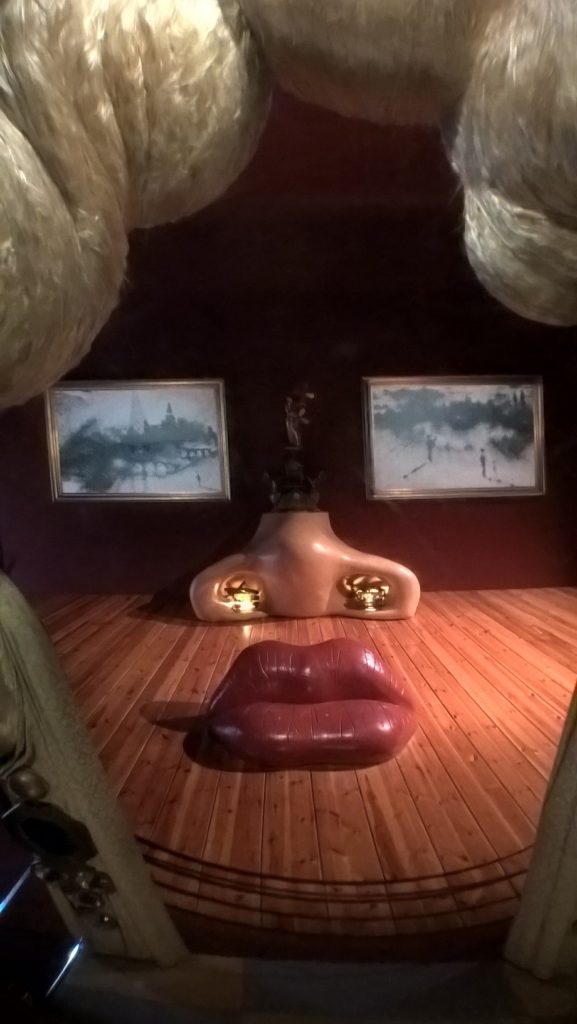Spain’s Costa Brava is one of the most beautiful coastal regions on the Mediterranean. From the border with France all the way down to Barcelona, hikers, backpackers, and trekkers are rewarded with rugged terrain, stunning coastal vistas, and authentic Catalan fishing villages ranging from the quaint and quiet, to those with a lively touristy side. Not nearly as well known as the Camino de Santiago which runs across the northern part of Spain, the Cami’ de Ronda offers a more secluded experience, undeniably more scenic, particularly for those likely to gravitate towards coastal adventures. If you are into multi-day hiking/backpacking trips as I am, you’ll find the Cami’ de Ronda one of those rare combinations of wild natural beauty and exhilarating hiking, coupled seamlessly with the opportunities presented by nightly stays in the Costa Brava’s most popular seaside destinations. It’s a Pearl in a world filled with oysters.

The Cami’ de Ronda, a series of trails dating back to the 19th century, can be walked in its entirety as a staged hike anchored by daily start and end points located in the Coastal Villages of the Costa Brava. With a length in excess of 200 km, the Cami’ de Ronda stretches from Blanes near Barcelona to Portbou on the French border and has been used over several centuries by fishermen, by smugglers, by the Guardia Civil to prevent smuggling, and by refugees escaping the Spanish Civil War. The best resource I’ve found on the trail is a book titled “The Costa Brava Way” which lists the trail as 12 distinct stages and 255 km in length.
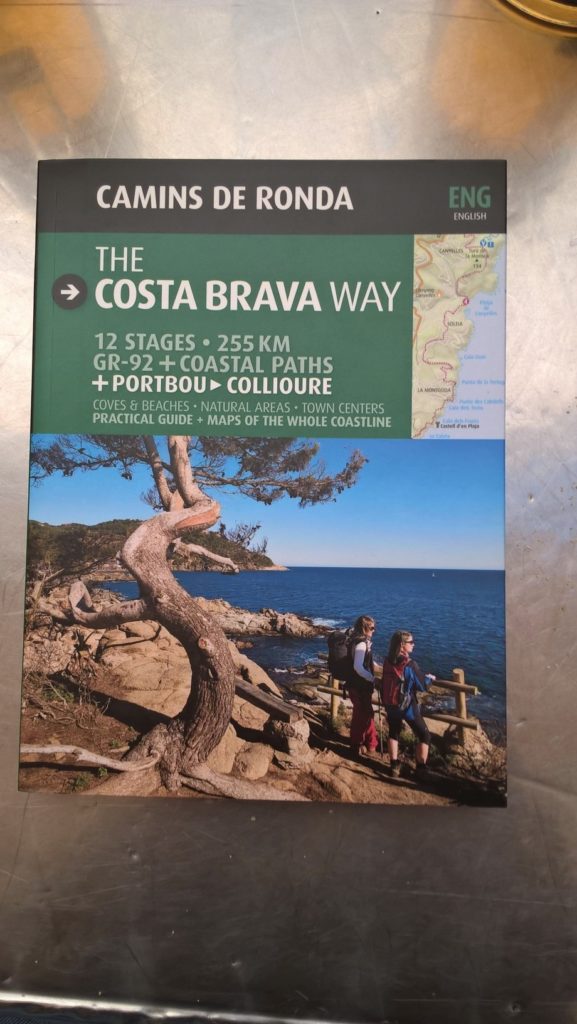
This book can be purchased through Amazon and is available in hike/bike/adventure shops throughout Barcelona. If you plan on backpacking or hiking the trail, I would recommend purchasing or borrowing the book as it is detailed and offers deviations to some of the stages that you wouldn’t otherwise find. Translated from Catalan to English, directions at times can be confusing. Don’t fret, it’s hard to get lost as you have the coast as your guide for much of the trail and the trail itself is reasonably well marked.
Below are my descriptions for Stages 3 through 9 of the Cami’ de Ronda as defined in the reference book, “The Costa Brava Way”. I felt these to be the best Stages of the trail and would categorize their range in difficulty from easy to moderate for the most part with some portions described as moderately difficult. As listed, they run South to North. I felt Stages 1 & 2 were too urban for my taste so I started my own hike at Stage 3 with no regrets. Stages 10, 11, & 12 as presented in the book looked fantastic to me but I didn’t have time on this trip to complete them. I’ll have to save them for another day and given my overwhelmingly positive experience with Stages 3 through 9, I’ll be making that trip soon.

Stage 3- Sant Feliu de Guixols to Palamos- 18 KM/5-7 Hrs – A great place to start the hike, as the first two stages were found to be quite Urban. While Stage 3 is still a little urban it follows the coast for its entirety and includes Platja de Oro, Cap Roig, Sant Antoni de Calogne, and Palamos. In particular, Platja de Oro until Cap Roig is a very nice section. Sant Antoni de Calogne to Palamos is all beaches and a nice stroll of perhaps 3 miles. Palamos is a great town and a good place to spend the night. If you arrive before it closes, the fishing museum is really interesting and makes for a good stop. At the end of day 1, and every other day for that matter, dinner and some beers at a place with outside seating will be in order. Try El Txoco (or perhaps El Txoko?), a little Tapas joint with a view and outdoor seating that has reasonable prices.
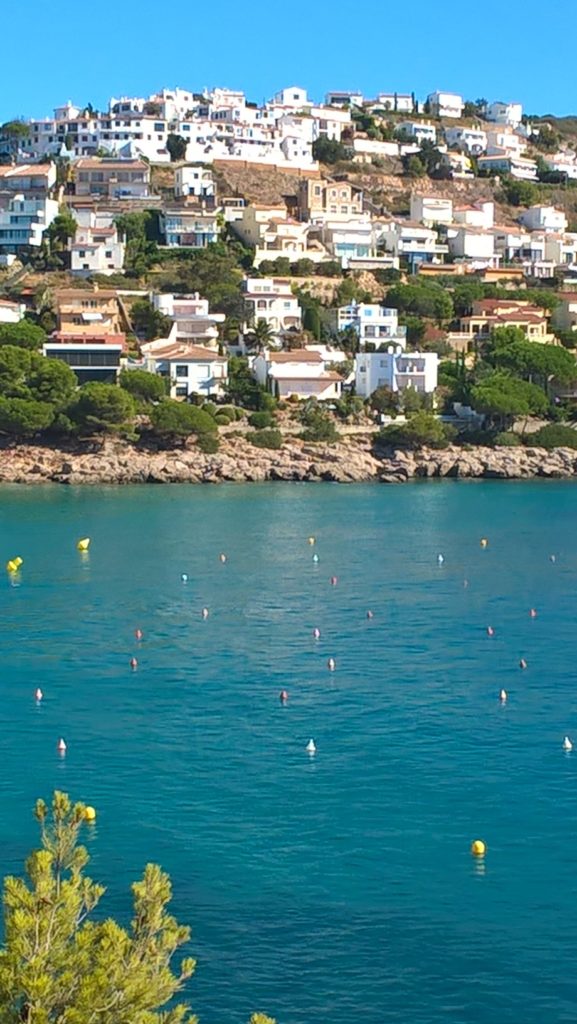
Stage 4- Palamos to Begur- 23 KM/6-8 Hrs. Stage 4 becomes a mix of urban and more rugged terrain. One of the better stages particularly at the beginning. The villages and coves/beaches are nice but remember, every time you see a “Cala” or cove you’re going to go down to the water which means you then have to hike back up. However the route is still not that difficult and the coves present some really nice beach scenery. Included in this Stage are the towns of Calella de Palafrugell, Llafranc, and Tamariu. Calella de Palafrugel is a beautiful village on the Sea and would be a great place to stop for lunch if the time is right. Also Llafranc and Tamariu are picturesque and representative of the quaint fishing villages that dot the coast in this part of Spain. Overall the scenery through Tamariu does not disappoint. From Tamariu to Begur is a bit tedious as it’s an uphill climb into Begur and while you could stay on the coast and hike to Cala d’Aiguablava which is a well known beach, and then take the local bus up to Begur, I’d recommend you hike into Begur first and consider hitting the beach after dropping your backpacks. The bus from Begur to Cala d’ Aiguablava runs regularly making an a late afternoon swim quite doable. Begur is great and a good place to spend the night. Would highly recommend Hostalet dels Indians, a family run Inn with great service. It’s right in the center of town and includes a really good breakfast. I can still remember the elderly lady that owned it. Her name was Antonia. Though prices in Begur are a little more expensive than on the coast, Hostalet dels Indians had a reasonable rate in the off season. For good picture opportunities, hit the Castle in the middle of town.
Stage 5- Begur to L’Estartit- 21 KM/6-8 Hrs. It can be a little tricky heading out of Begur so finding the path the night before is worth the effort. If you have trouble, ask the locals but in any event you really can’t go wrong if you make it to the coast. If you have “The Costa Brave Way” you’ve noticed that at times, it offers variants from the main trail. On this Stage, I’d recommend the coastal route going to Platja de Pals rather than going to Pals which is further inland. This route goes through or close to Cala de Sa Tuna which is really nice and then onward to Platja de Pals. The coastal sections all the way to L’Estartit are beautiful and not too challenging.There is a necessary water crossing at the River Ter which much of the time you can easily do without getting too wet. At times however, the channel cuts to deep and unless you’re willing and able to get wet, you’ll have to head inland 5 Km’s or so to cross at a bridge. This can add 10 Km to your day so plan accordingly. L’Estartit was a great town to stop for the night with good restaurant choices and the feel of an authentic fishing village.

Stage 6- L’Estartit to L’Escala- 14 KM/5-7 Hrs. Very pretty and a little shorter than some of the other Stages but also quite rugged with a lot of ups and downs. The highlights are the coves you pass through as well as the last several Km’s as you hike into L’Escala. Eat dinner by the water and you’ll be able to see the lights of Roses, the next days destination, across the Bay of Roses. Check out the beginning of Stage 7 before the morning because it can be a little confusing to find. The “Costa Brava Way” lists San Marti de Empuries as the end of this stage but you’ll want to stay in L’Escala. The ruins at Empuries are worth seeing so carve out some time for them. Also be sure to take a picture with “the band” after eating dinner down by the water. L’Escala has great beaches so if you arrive early, it’s a great town to get in some water sports.

Stage 7- L’Escala to Roses- 31KM/8-10 Hrs. Don’t freak out, the Stage is long but also flat and easy. A good change of pace and very different from the other stages. Finding the start was a little confusing so check it out the night before. A couple of cool towns to walk through, some orchards, wetlands, and a wooden walkway that crosses a river. The most interesting town is Empuria-brava which is a town full of canals and is apparently known as the Venice of the Costa Brava. The town is very interesting but perhaps a little overstated. Just before you reach Empuria-brava, you’ll walk across a wooden bridge which makes for a great picture opportunity. As you approach Roses the scenery again turns a bit urban. Don’t be tempted to cut some Km’s out by cutting back toward the coast. A rather long Marina will prevent you from reaching Roses from the coast as there is no bridge to cross over. You’ll have to backtrack which will make a long day quite a bit longer. When you reach the sea front of Roses it becomes nice again with views of the Bay of Roses. Lots of choices for eating in Roses on the Promenade at the Sea Front. Similar to the previous night, if it’s clear you will be able to see the lights of L’Escala across the bay. It’s always motivational to look back on the distance you covered during the day!
Stage 8- Roses to Cadaques-23 KM/6-8 Hrs. If you’ve been paying attention you’ll have noticed by now that the topography and types of flora change dramatically during some of the stages. This is true of stage 8 as well and you’ll find the landscape turns barren and rocky as you move away from the coast when cutting across the Cap de Creus peninsula toward Cadaques. Because of this, the path markings become a little harder to follow, particularly as you cover a quite rocky section approaching Cadaques. By now however, you’re once again in sight of the Sea making it difficult to get lost. If your using the “Costa Brava Way” as a guide, you’ll see there is a variant leading to the Far de Cala Nans (or the Cala Nans Lighthouse). The variant is well worth taking and drops down by Mas de Sa Planassa, a plantation of sorts that is hard to miss as its comprised of the only structures in the area. The main path continues above. Cadaques is very picturesque and regarded as the most beautiful town on the Costa Brava. It’s quite small and a popular destination in high season and on nicer weekends during the shoulder months. It’s best to make lodging reservations in advance.
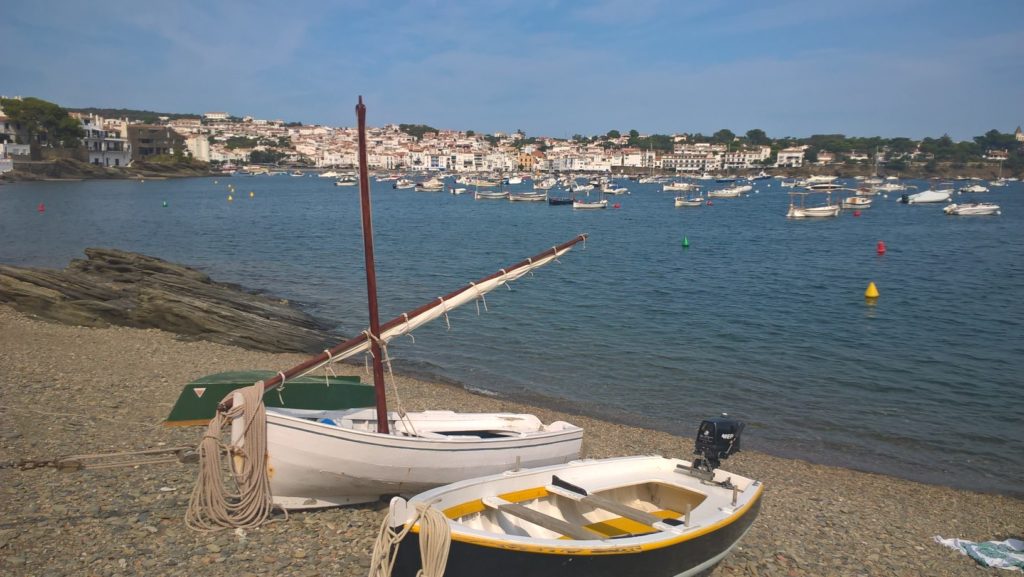
Stage 9-Cadaques to the Cap de Creus Lighthouse as a day trip-14 KM roundtrip- My recommendation would be to spend two nights in Cadaques and use a day to hike out to the Cap de Creus lighthouse without packs. If you’ve been hiking all week with full packs, it will feel like a treat hiking the coastal trail with just some water and a day pack. Either pack a lunch or better yet have a beer and a bite to eat at the open air restaurant on site before hiking back to Cadaques.
Tip: One thing to keep in mind; while I did the stages from town to town while carrying my pack, it would also be a lot of fun to stay in a town for two nights (or more) and do the hiking in different directions each day. That way you could carry just a day pack and also spend a little more time sight seeing in each town. The best towns were Palamos, Llafranc, Begur, Cadaques, L’Estartit and L’Escala. If you want to take day trips from the Coast, Figueres, and Girona (Game of Thrones was in part filmed there) are great places to visit. If you visit Figueres, don’t miss the Dali Museum. I had no idea how crazy that man was until I saw his art. Well worth the admission.
List of hotels – below are hotels that were a decent value during the shoulder months of September and October. When I did this trip in 2017, I made bookings each day upon arrival in town while having a beer and a pintxos. Didn’t run into any problems finding rooms with exception of Cadaques which you should book at least a day or two in advance, particularly if you’ll be there on the weekend.
L’Escala- Bonair- Was close to the beach, cheap and clean. No breakfast that I recall.
Roses- Hotel Maritim– Had a good breakfast and the people running it were great. Stayed two nights and visited the Dali Museum in Figures one of the days. Don’t remember any issue with catching a bus to Figueres.
Cadaques- Hotel Can Pepin– Was one of the only good, cheaper, hotels in Cadaques. No breakfast included but I think there was a bakery/bfast shop attached or nearby. Its a small town so the location was fine.
L’Estartit- Hotel Medes II– Good pool, and breakfast. Nice people ran the place. repeated this section and stayed in Hotel Bel Air the other time. Cheaper and just as good.
Begur- Hostalet dels Indians- Would highly recommend this one. Family run with great service. Right in the center of town and includes a really good breakfast. I can still remember the old lady that owned it. Her name was Antonia.
Palamos- Hotel Hostal Vostra Llar- Nice, reasonable hotel with a good breakfast buffet. We loaded up and even made some sandwiches (from the breakfast meat, cheese and bread) to eat for lunch before leaving . I remember Palamos to be a highlight with a good beach and an older part of town. I did this stage both Northbound and Southbound. The other hotel I stayed at was Hotel Marina. Both are good but i think the first one with the good breakfast was better.
Sant Feliu de Guixols- Hotel Placa- This would mark the beginning of Stage 3 so if you start here, it would be a good hotel choice. Nice town with good places to eat.
Have fun and I hope this is of help.
Transportation: Buses run several times a day from Barcelona Nord Station up the coast to most of these towns. Cadaques is a little remote so plan accordingly. I found it easiest (and not to expensive ) to take a taxi from Cadaques to Llansa (30 min ride) and then take the train back into Barcelona.



